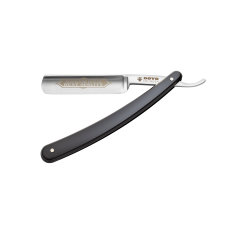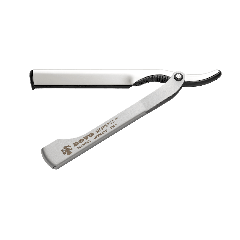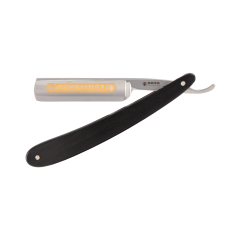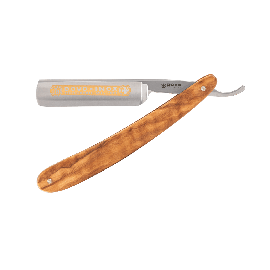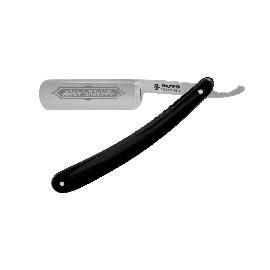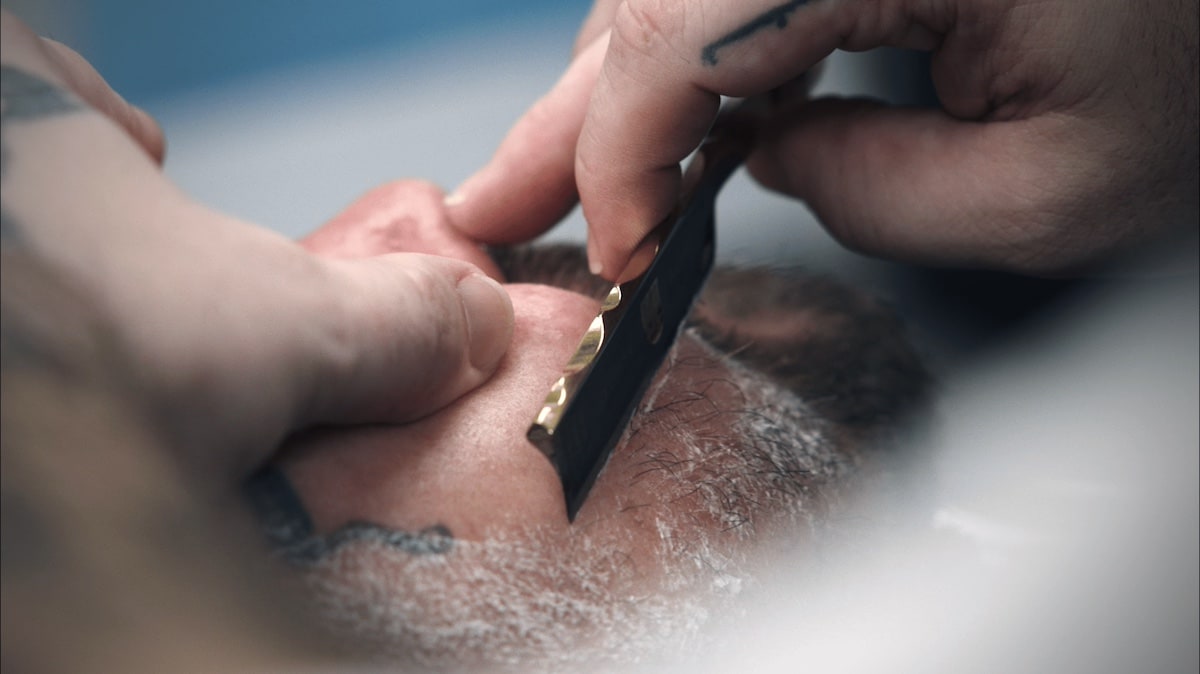
STRAIGHT RAZOR TYPES – WHAT ARE THE DIFFERENCES?
Carbon, half hollow and 5/8 inch is just all Greek to you? Don't worry, it is easy to be a little overwhelmed at first. To make it as easy as possible for you to get started, we explain the most important straight razor types in the following blog. Below, we will go through all of the straight razor terminology, so you will know what’s what and can decide what model will best suit your needs. If you're looking for a shaving guide, then you should have a look here!
FAQ
What are the differences in razor blades?
Straight razor types differ in blade width, grind, point shape and material.
What do I need to know about blade width?
Razor blades are usually 3/8, 5/8 or 6/8 inches wide. The 5/8-inch blade is the most common and is recommended for beginners.
What are the different grinds?
Blades are ground either flat, full hollow or half hollow. The full hollow grind is the most suitable for beginners.
What straight razor point types are there?
This describes the shape of the upper edge of the razor. There are four main types: square point, round point, French point, and Spanish point. The round point is especially popular with beginners.
What is the effect of different materials?
Razor blades are usually made of carbon steel or stainless steel. The former is particularly resistant to wear and tear, but they require more care than stainless steel blades, as they are not resistant to rust and oxidation.
Width of straight razor blade types
In the last few decades, straight razor blade types with widths between 3/8 and 6/8 inches have become popular. Each of the different sizes have individual advantages. Therefore, you should pay attention to your preferences when making a purchase decision.
3/8-inch
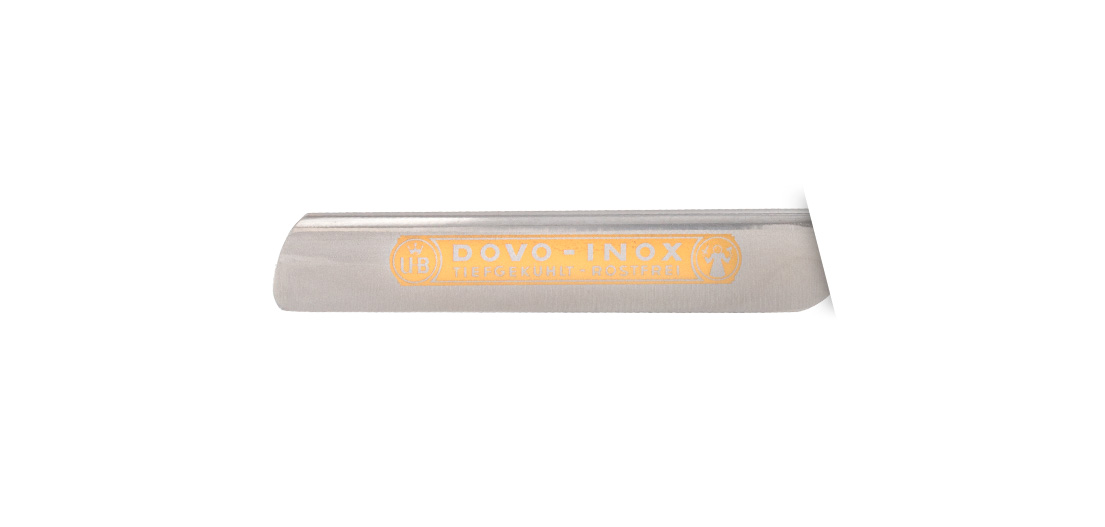

Narrow razor blades, such as the DOVO INOX Wedge, work very well with precise shaving of narrow facial areas such as around the nose, ears, or eyebrows. For these parts of your face, you'll find a narrow razor the easiest to set up and stroke at the right angle. A 3/8-inch razor is rather unsuitable for a full shave and should be used mainly by experienced users.
5/8-inch


Straight razor types with a width of 5/8 inches are true all-rounders and so are the most common in the world of classic wet shaving. Not only do experienced shavers choose this width, we also always recommend it as the first choice for a straight razor for beginners, such as the DOVO BARBAROSSA OLIVE or ASTRALE. These razors strike a balance between precise trimming of contours on one side and a smooth shave on the other. The weight lets the razor glide effortlessly across your face.
6/8-inch
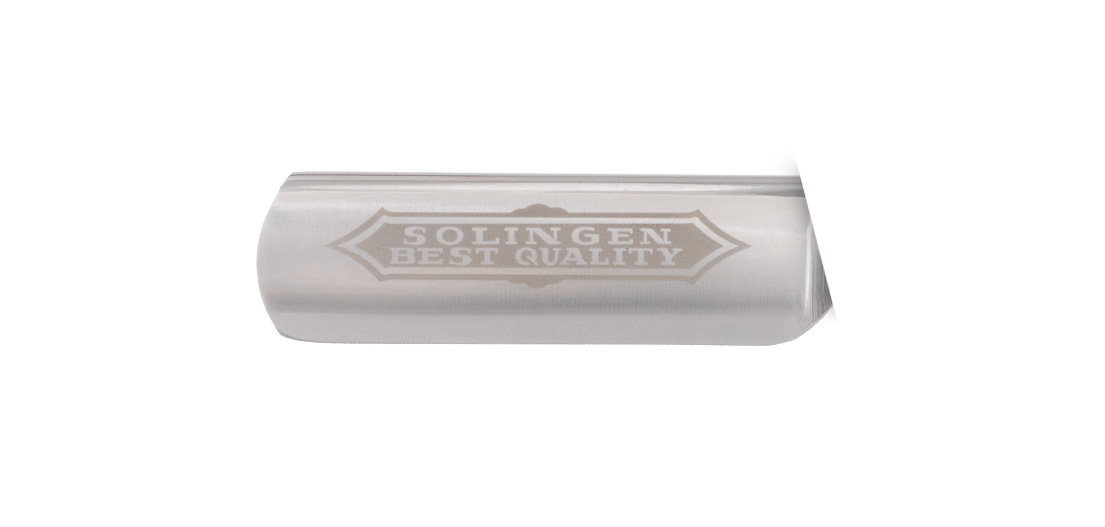

The 6/8 inches is the blade width to use when you have really thick beard growth. The heaviness of the blade allows it to glide smoothly and effortlessly over your skin. The BERGISCHER LÖWE HORN 6/8" is a good starter straight razor for beginners, give it a try!
Types of straight razor grinds
In order to create a high-quality razor, a steel blank is ground and sharpened several times by hand. There are different types of straight razor grinds that define the characteristics of a blade.
Flat grind
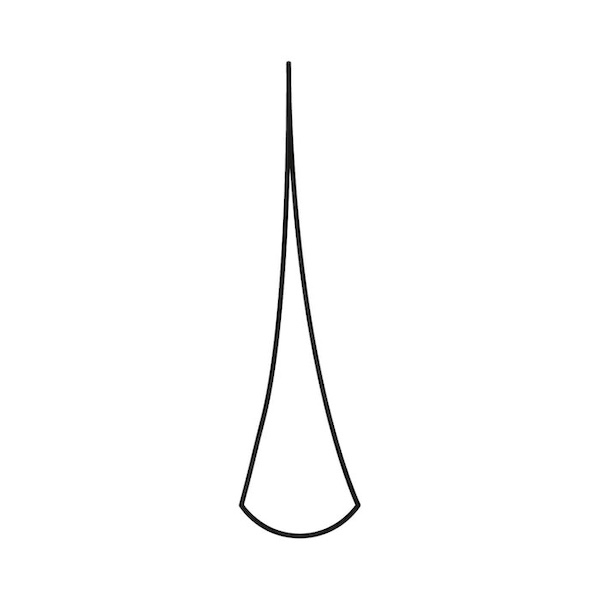

Razors with a wedge shape are usually referred to as flat grind. These flat blades, like the DOVO INOX Wedge, are rigid and stiff. You will often find this shape on narrow razors to allow very accurate shaving. Initially, razors were only flat ground because an exact hollow grind was not feasible with the technical possibilities of the time. Today, this grind is used rather rarely for facial shaving. However, it offers advantages for fine shaving in combination with narrow straight razor blade types.
Full hollow grind
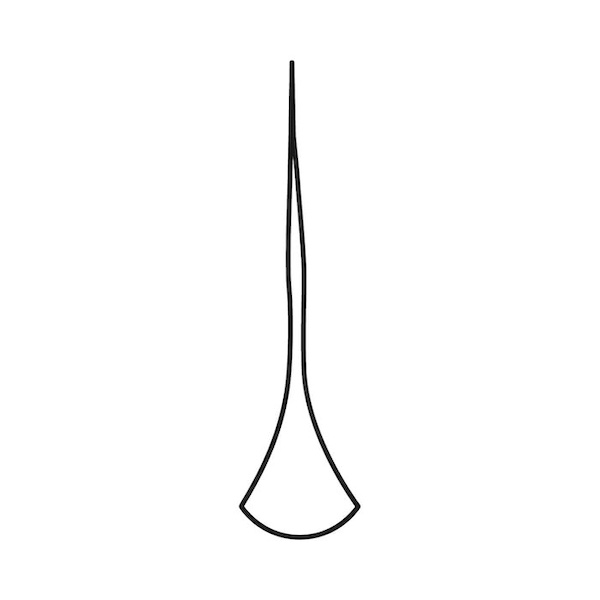

Nowadays, most straight razor types are made with a full hollow grind. Up to 15 passes of our most experienced razor sharpeners are required to achieve this grind. The flexible blade adapts best to your skin irregularities and is therefore very popular - not only amongst beginners. The clear feedback and characteristic sound ensure a thorough and comfortable shave.
Half hollow grind


Half hollow blades prove to be much more flexible than flat blades and vibrate slightly when in use. However, they are not as flexible as a straight razor blade types with a full hollow grind. Some users prefer these blades because they offer a compromise between flexibility and rigidity. This sturdiness makes blades less sensitive and creates a safer shaving experience.
Types of straight razor grinds
Throughout the long history of shaving, people have experimented not only with blade grind and width, but also with different straight razor point types. Here are the most important ones:
Square point


The square point is very popular among advanced and professional shavers. It allows very precise shaving and trimming of contours, but it should be used with caution - the sharp tip carries a certain risk of injury. If you want to try a razor with this head shape, DOVO APEX is a good place to start!
Round point
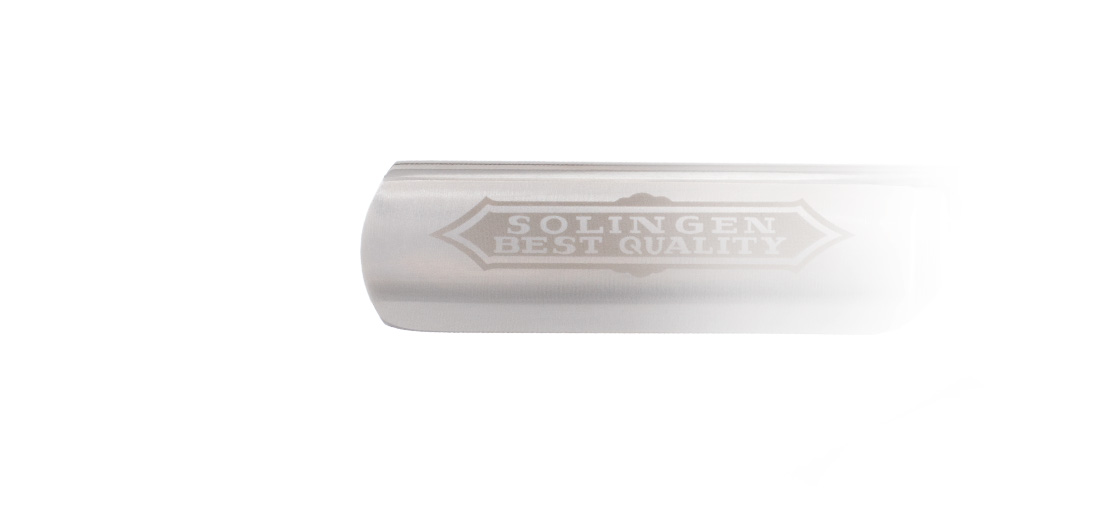

The round point is the most popular shape of straight razor types these days. Blades like the BERGISCHER LÖWE HORN 6/8" are well suited for all applications and the round point reduces the risk of injury during use. Thus, blades with this point are the ideal straight razor for beginners. You can learn the basics of wet shaving with this blade, before choosing a more specialized model.
French point


The French point is a good compromise between the round and the square shape. You can trim contours very nicely and shave thoroughly with this, without too much risk of injury. If you're looking for a razor in this style, take a closer look at the DOVO INOX Wedge.
Spanish point


The Spanish point consists of an acute angle that turns into a concave shape at the end of the cutting edge. We designed the DOVO BARBAROSSA EBONY with this point shape so that you can take care of your contours during a classic wet shave without sacrificing a minimum of safety.
Types of straight razor materials
Originally, all straight razor types were made purely from carbon steel, but with advances in material technology, other metal alloys - such as stainless steel - have made their way into wet shaving.
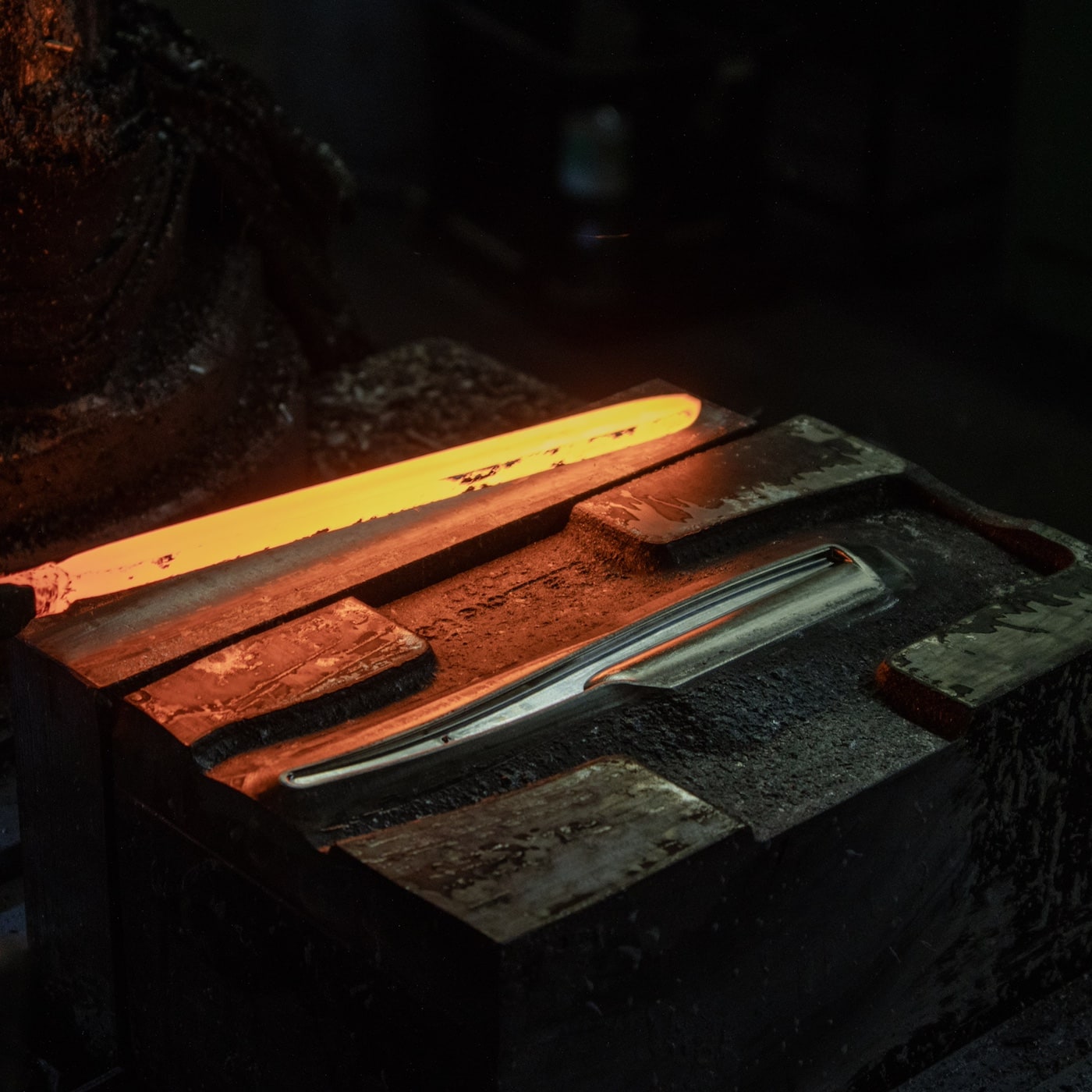

Carbon Steel
Straight razor types made from carbon steel are known for their smooth shaving properties. The good cutting durability of the steel is achieved by heating it to approx. 1,000 °C (1,832 °F) followed by a quick dip in an oil bath. Razors made of this steel achieve a Rockwell hardness of up to 61 HRC. This makes them particularly resistant to wear and tear. However, carbon steel is not stainless. You need to follow the care instructions so that you can enjoy your razor for a long time.
Stainless Steel
Our stainless-steel razors are forged from rust and acid resistant steel. This modern alloy is characterized by good cutting durability and sharpenability. For you, the advantage is that the blades are very low maintenance and easy to care for - so you don't have to worry about rust or other types of oxidation.
Straight Razor Recommendations for Beginners
Glad you made it this far! You now know everything about straight razor terminology and you're ready to make a good buying decision.
Here we have three more recommendations for you:
DOVO Best Quality 5/8"
The DOVO BEST QUALITY 5/8" has proven itself over the years as a great entry-level razor. The hollow grind provides a smooth shave while the round point keeps the risk of injury low.
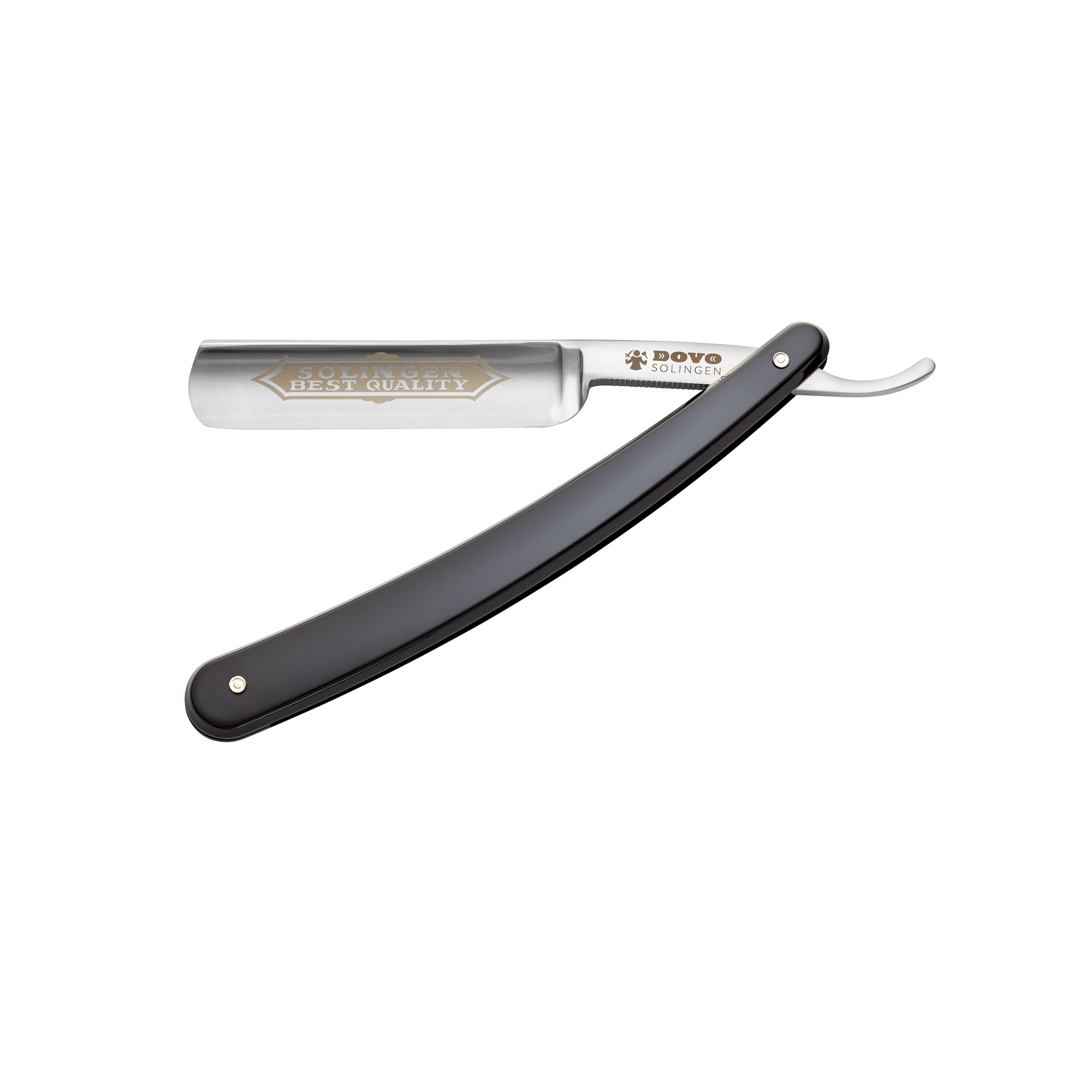

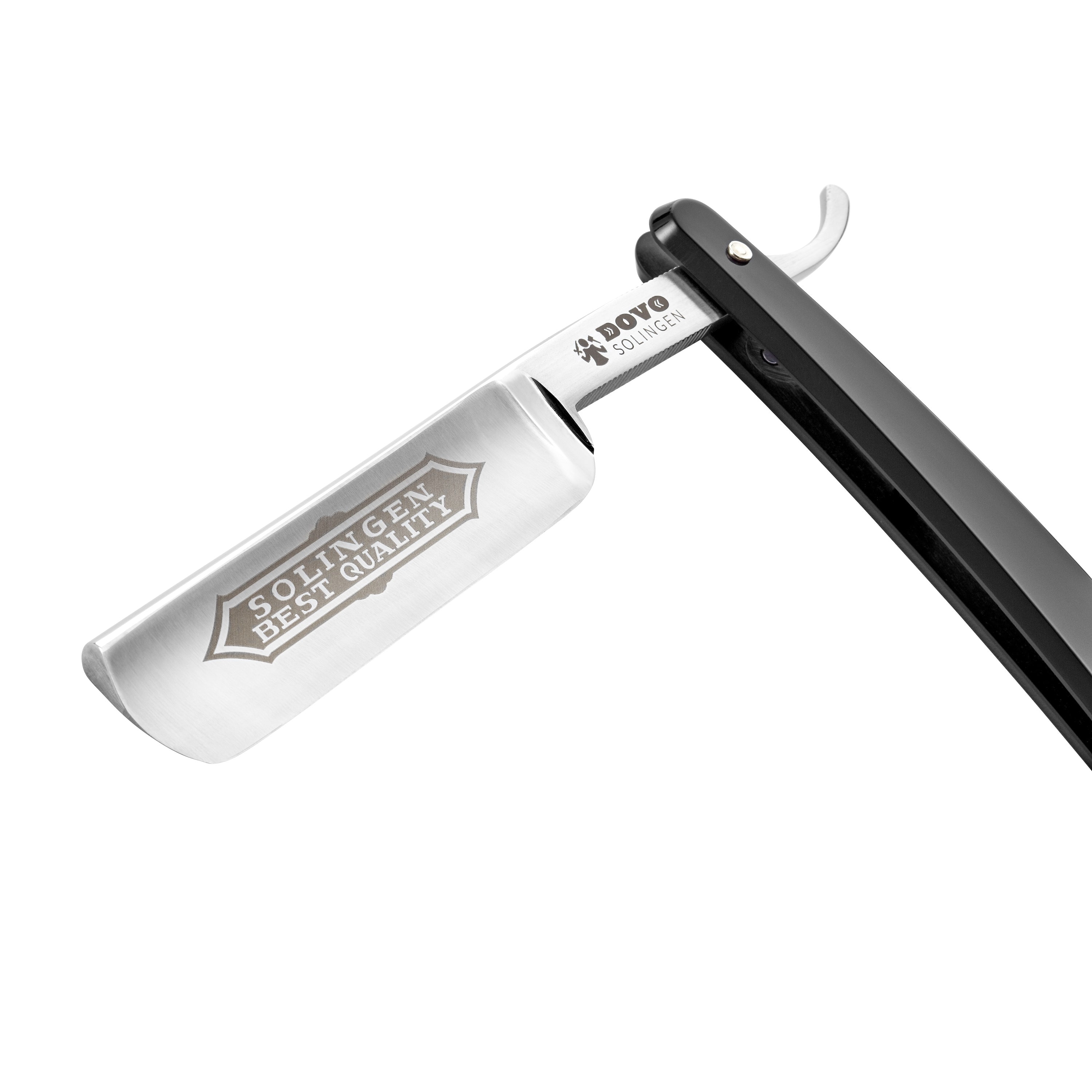

DOVO Shavette
With a SHAVETTE™, you're choosing the entry level with the lowest upkeep. You don't have to worry much about stropping or maintaining your straight razor - just insert the blade and go!
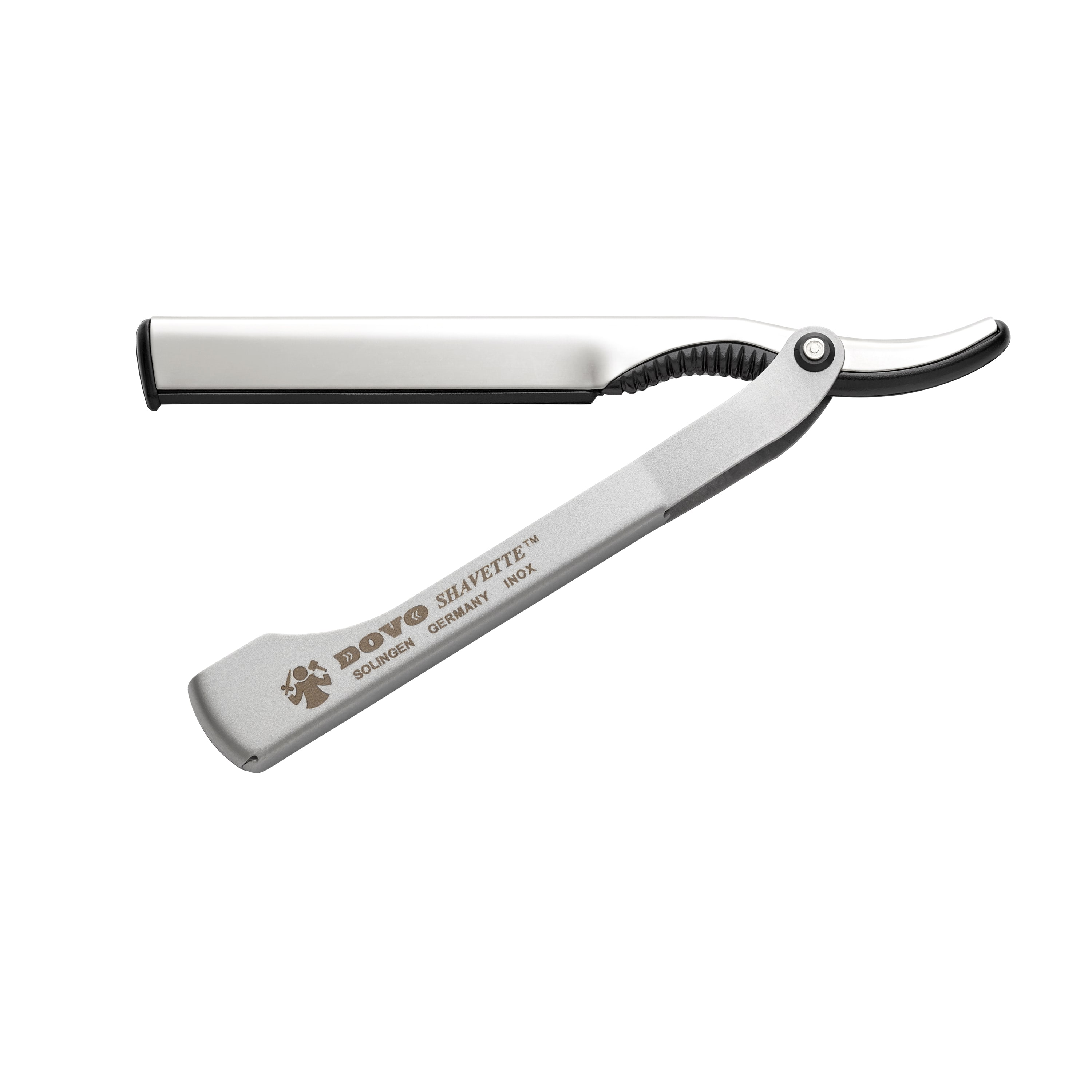

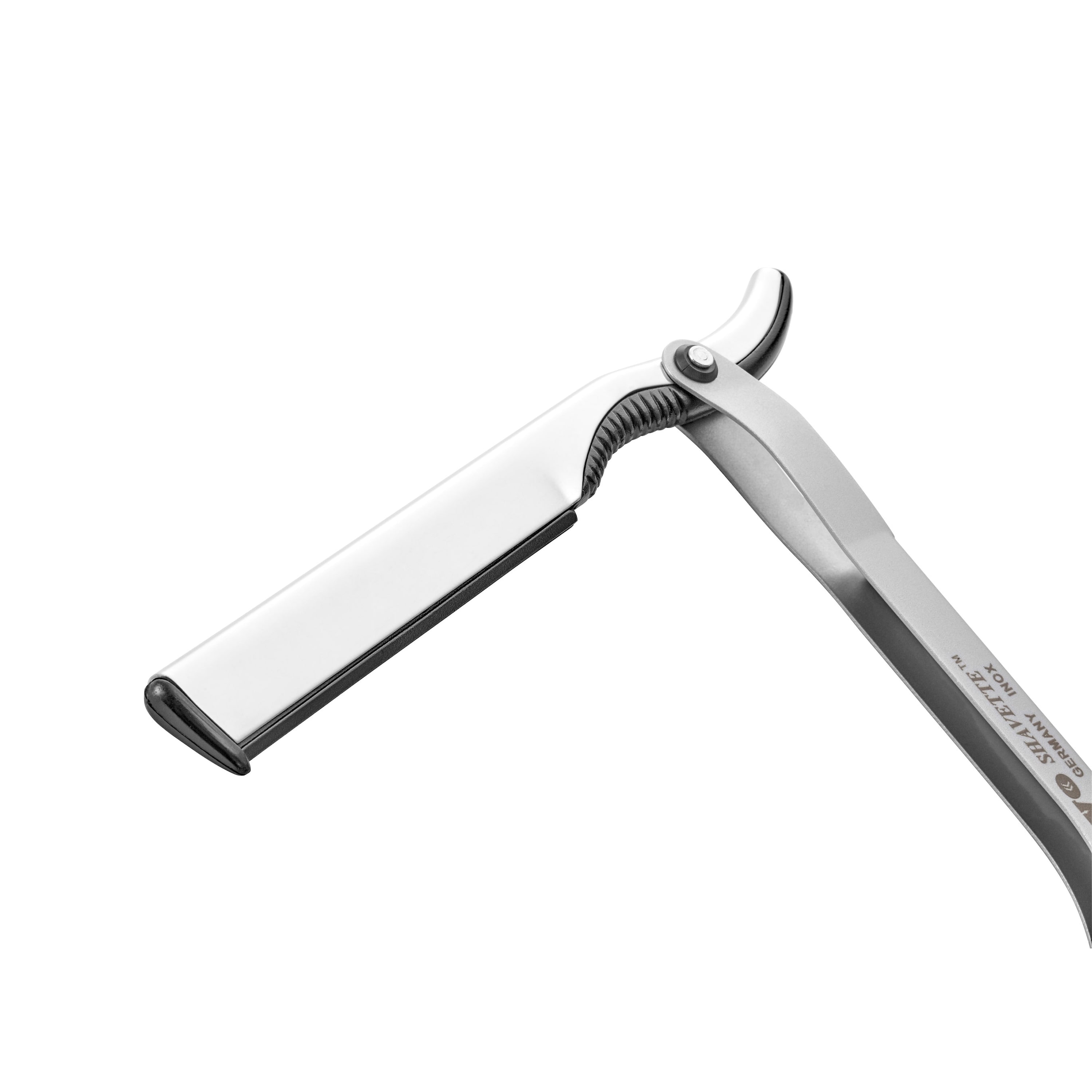

DOVO INOX
The two DOVO INOX 5/8" with Olive or Ebony wood handles are also great introductions to classic wet shaving. Round point and full hollow grind make shaving with them safe and smooth, while the stainless steel requires minimal maintenance.
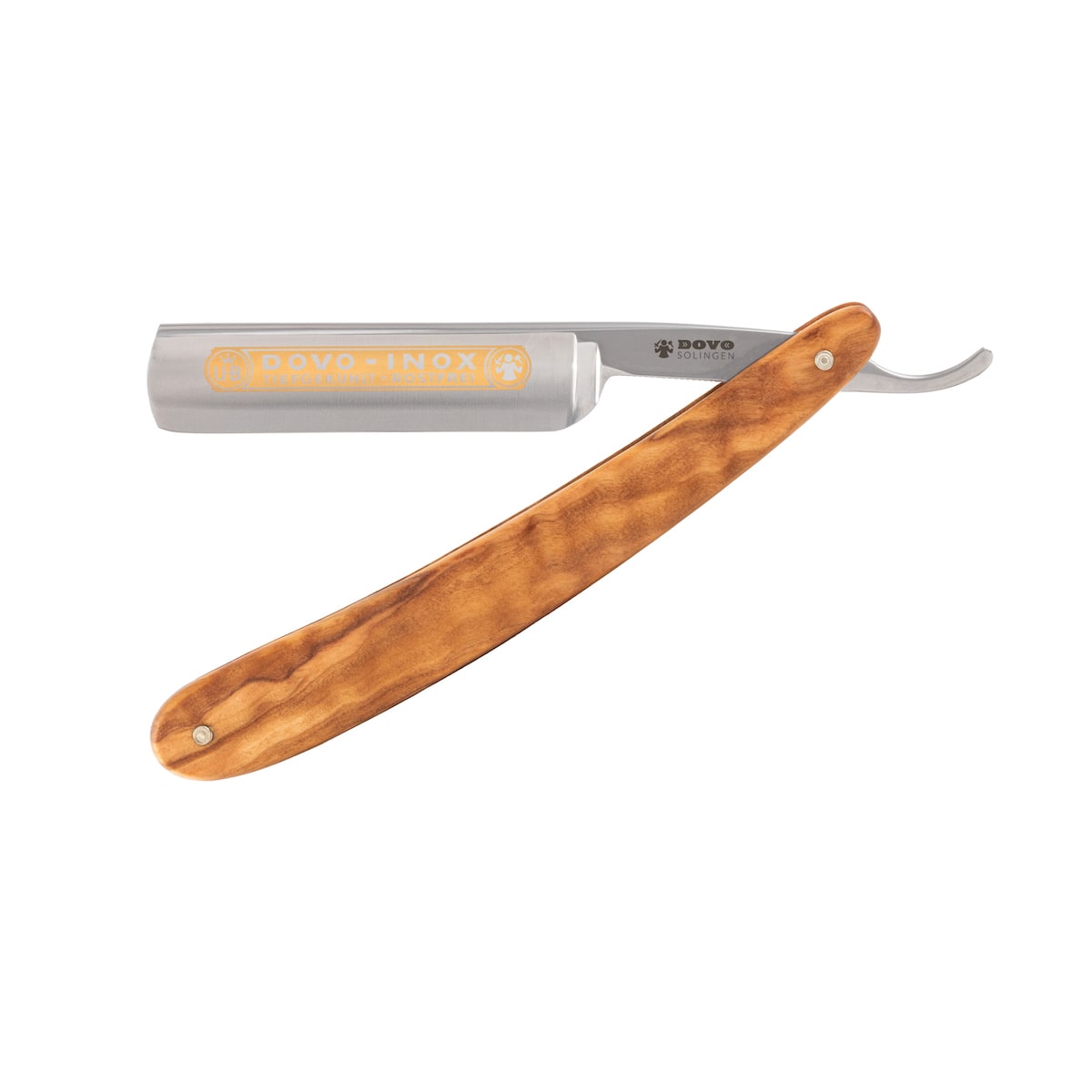

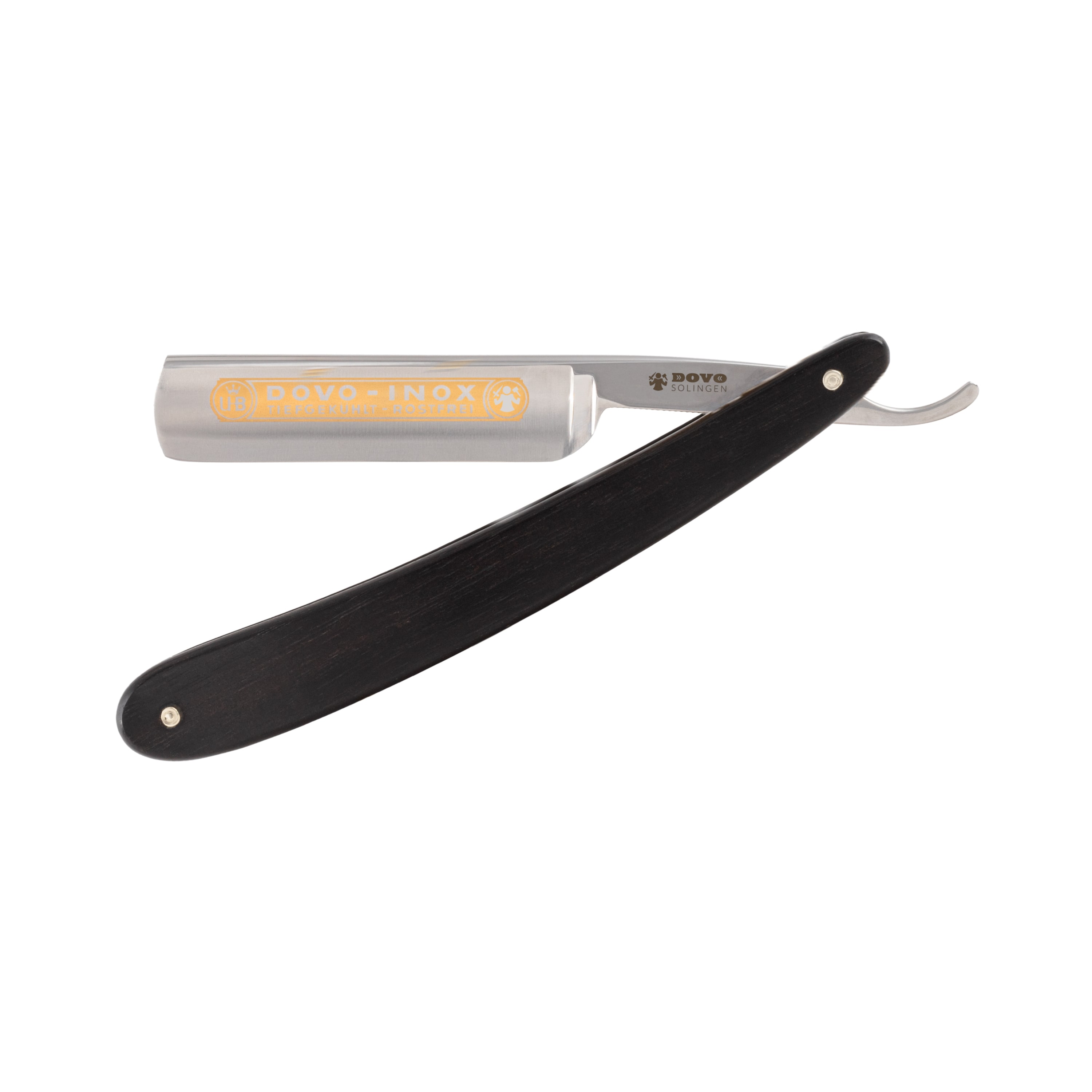


 UK
UK  US
US  Deutsch
Deutsch 